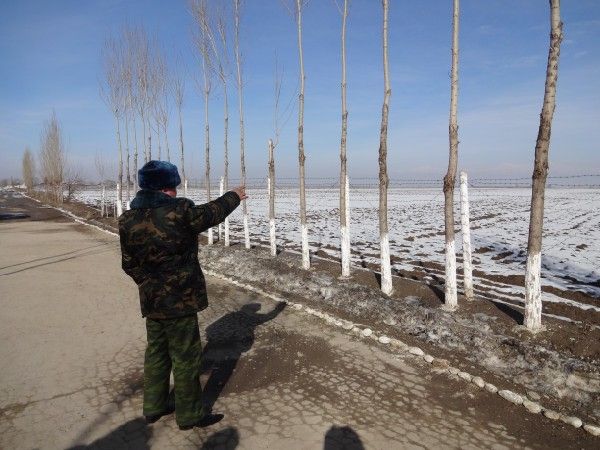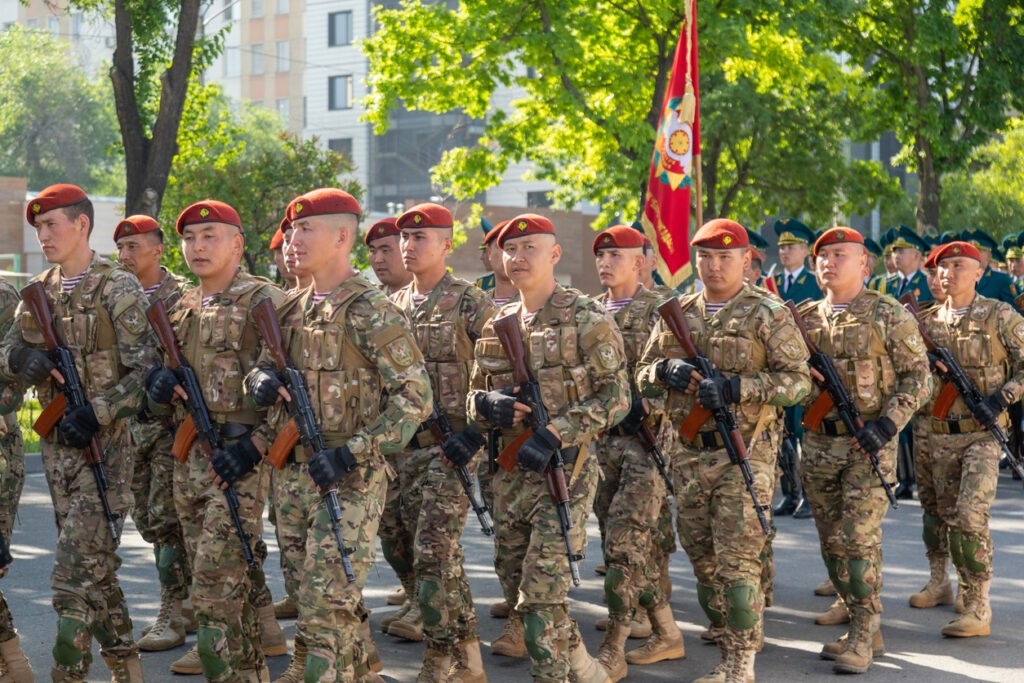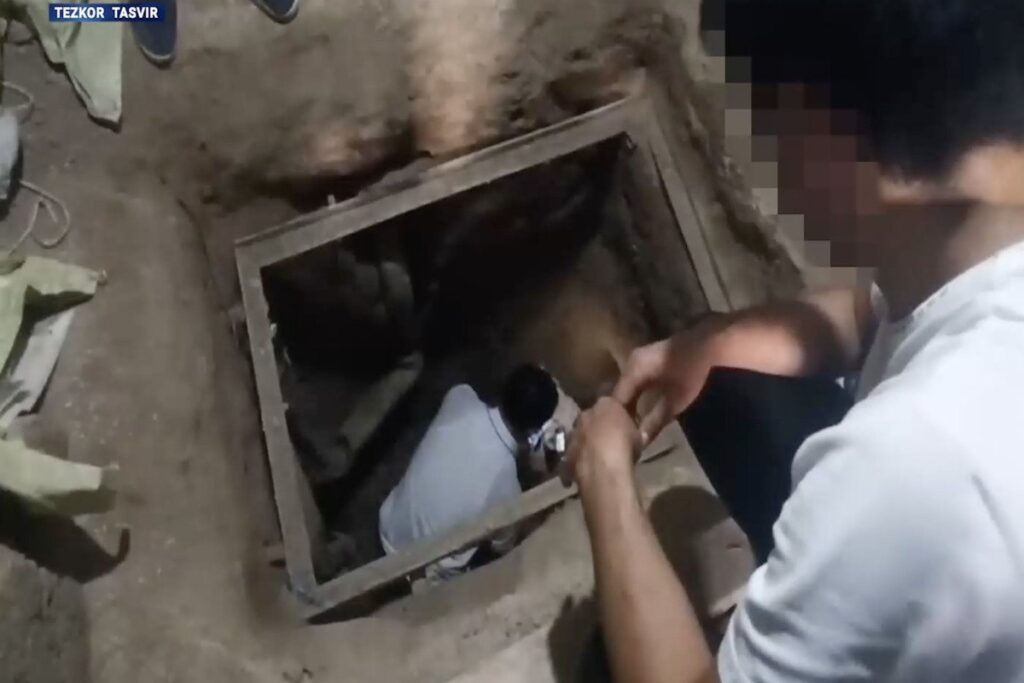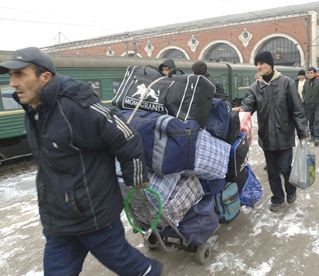OSH, Kyrgyzstan (TCA) — The article below, originally published by Stratfor, highlights the border dispute problem that since the collapse of the Soviet Union has systematically emerged between Kyrgyzstan, Uzbekistan and Tajikistan, which share the densely populated Ferghana Valley. The dispute, territorially end economically based, is still an ongoing factor of unrest and tense relations between the three countries. Here below is the analysis of Stratfor, entitled “Engineered Volatility in Kyrgyzstan”.
Kyrgyzstan is a small yet strategically located country in Central Asia whose geopolitical significance has often outstripped its geographic size. March 23 marked the sixth straight day of an active border dispute between Kyrgyzstan and western neighbor Uzbekistan. An official from the Collective Security Treaty Organization (CSTO), a Moscow-led security group made of former Soviet states, has been dispatched to the disputed area as both countries maintain their border security forces at high alert. Meanwhile, Kyrgyzstan’s domestic political situation — which has been simmering — has the potential to flare up on March 24, the Day of National Revolution. Anti-government protests are scheduled to take place tomorrow in the country’s restive southern region.
Border disputes and protests in this area are not unusual. Most of the time they tend to dissipate, but occasionally they can lead to larger tremors. Widespread ethnic violence in June 2010 between Kyrgyz and Uzbeks resulted in hundreds dead. The current situation, with protests running alongside a border quarrel, has the potential to erupt into a wider conflict that could destabilize the region. Though these are small countries with limited geopolitical significance, a destabilized Central Asia would create a wide-reaching ripple effect: Many large and small powers — Russia, China and Afghanistan, among others — all have interests and interconnectivity in the area. Ultimately, however, the stability of Central Asia rests on one important region that many countries either share or border: the Fergana Valley.
The Fergana Valley is the most populous and agriculturally productive part of the region and serves as the demographic core of Central Asia. As a result, the territory is highly coveted by many of the region’s ethnic groups. It has been controlled by numerous entities throughout history, most recently by the Russian Empire, which eventually became the Soviet Union. The Soviets divided the Fergana Valley, which borders the populous South Kazakhstan Region, among three republics: Kyrgyzstan, Uzbekistan and Tajikistan. Moscow did this in part to ensure that a unified Central Asian entity could not emerge to challenge the dominant rule of Moscow. To do this, complex borders were drawn that completely (and intentionally) disregarded the ethnic makeup of the region, leaving pockets of ethnic minorities within the borders of those territories.
While the Soviet Union remained intact, these borders held little practical importance, since the territories were centrally ruled by Moscow. However, the collapse of the union left a turbulent political environment in its wake — nationalism was unleashed and cross-border ethnic conflicts became rife, such as the Uzbek dispute in southern Kyrgyzstan. The complicated borders of the Fergana Valley only made things worse. They were poorly demarcated in the first place and subject to intense dispute among the newly independent states of Central Asia.
Border disputes highlight the poor relationship that exists between the three Fergana Valley states, with cross-border shootouts occurring several times a year. This has also contributed to the volatile political environment within Kyrgyzstan itself, built on clan-based differences and geographic divisions. Discord between the southern parts of the country in the Fergana Valley and the wealthier northern core, centered around the capital of Bishkek, has led to periodic instability. Indeed, Kyrgyzstan has weathered two revolutions in the past dozen years. Internal Kyrgyz divisions and ethnic mingling in the south played an important, though not exclusive, role in the violent overthrow of Kyrgyz presidents in 2005 and 2010.
The current dispute surrounding the Kyrgyz-Uzbek border and the planned protests in southern Kyrgyzstan similarly have roots in the Fergana Valley. While specific details remain unclear, the origin of both developments appears to be protests that began in the southern Kyrgyz town of Kerben in the Jalal-Abad district March 14. Hundreds of people gathered to demonstrate against Kyrgyz President Almazbek Atambayev, a northerner who helped overthrow the previous leader, Kurmanbek Bakiyev, a southerner. The next day, rumors swirled around the key southern city of Osh, suggesting that violent protests would blight the city in the run up to local elections, scheduled for March 27.
These protests and subsequent rumors appear to have triggered a reaction by Uzbekistan, which on March 18 sent around 40 soldiers, two armored vehicles, and two trucks to the village of Mogol, located in a disputed zone near the Kyrgyz-Uzbek border. Kyrgyzstan then accused the Uzbek military of illegally crossing its border as well as unilaterally closing several checkpoints in the border zone between the two countries. In response to the Uzbek deployments, on March 19, Kyrgyzstan dispatched two troop carriers of its own to the same area, saying they needed to bolster border security. Kyrgyzstan’s Foreign Ministry also sent a note of protest to Uzbekistan and demanded that it remove its troops and dismantle the checkpoints it had installed.
Since the initial dispute, things somewhat calmed, with both sides agreeing on March 20 to trim the number of troops at the checkpoints to eight soldiers each. However, Kyrgyzstan called an extraordinary meeting of the CSTO military alliance (of which Uzbekistan is not a full member any longer) to discuss the issue in Moscow on March 22, and Kyrgyz units have remained in emergency mode along the border.
During the 2010 overthrow of the government, the CSTO provided the Kyrgyz police with equipment, and Russia even flew in 150 paratroopers. Now, with large-scale protests by opposition forces in southern Kyrgyzstan in the works, Kyrgyz authorities are alleging that audiotapes have emerged that prove opposition leaders — including prominent figure Bektur Asanov — are plotting to overthrow the Kyrgyz government. Kyrgyzstan’s Interior Ministry has deployed 3,000 personnel, mostly police officers, to the region in what is officially described as preparation for the March 27 elections. In reality, this could easily be an attempt to pre-empt the planned protests. The Uzbek mobilization that sparked the border dispute may also be an attempt to protect against an out-of-control security situation in southern Kyrgyzstan. Tashkent vividly remembers the flow of some 100,000 refugees from Kyrgyzstan into Uzbekistan during the 2010 eruption of ethnic violence in the area.
The political and security situation in southern Kyrgyzstan merits careful monitoring. It remains unclear whether tensions, as they have in the past, will eventually subside or escalate as they did in 2010. But regardless of what happens in the next few days, the conditions created by the divisions of the strategic Fergana Valley can be expected to produce geopolitical friction that lasts far beyond the current dispute.








